Commodore 64 Vs Modern PC? The question is this: how much better are modern computers, compared to the Commodore 64? Let's see it in this video.

The answer is not so obvious, also because it is not possible to make completely homogeneous comparisons. If, however, you pass me some inaccuracies, we can try to compare some characteristics.
On the playing field, the Commodore 64 and a couple of modern computers: a Acer laptop with Intel i7 processor and a Tower PC with Intel i5 processor. They are two computers with rather standard features. Computers that can be safely used for everyday operations, a far cry from expensive workstations that are available for technical drawing, gaming or video editing.
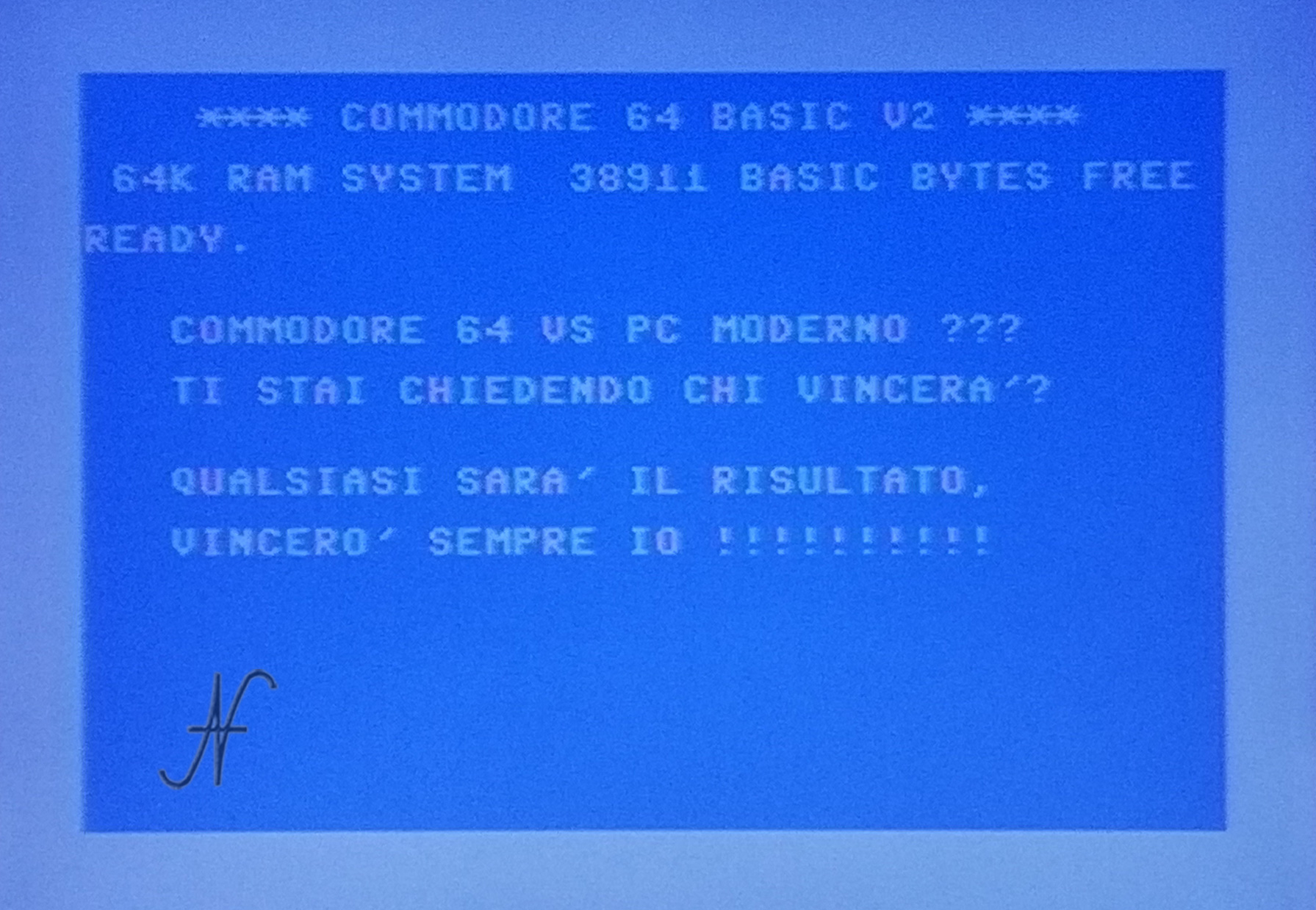
Commodore 64 Vs Modern PC? RAM memory in comparison!
First we can compare the RAM memory capacity.
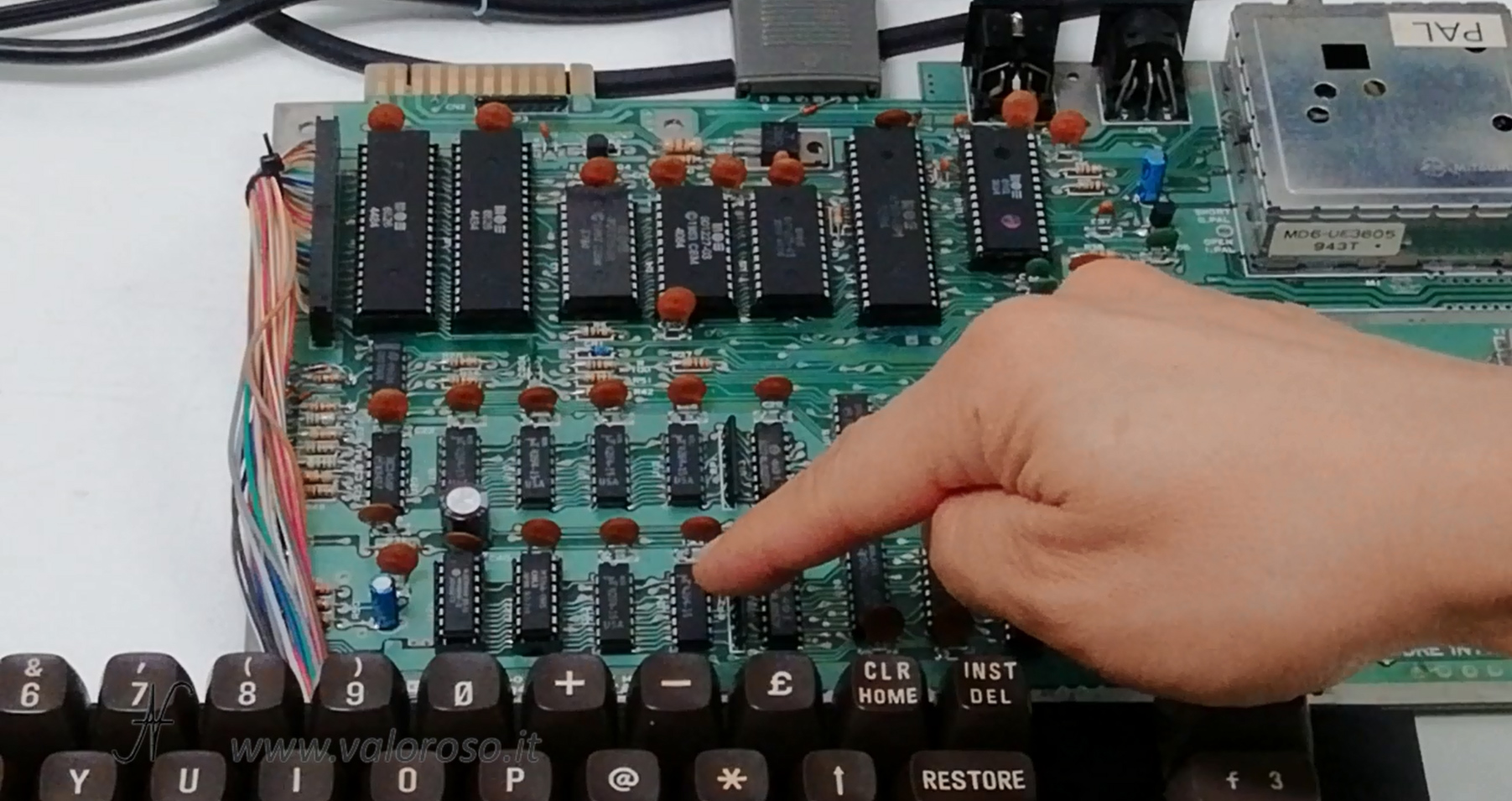
In the Commodore 64, the memory capacity is 64 KByte. The desktop PC has 4 GBytes of RAM installed, while the laptop has 8 GBytes.

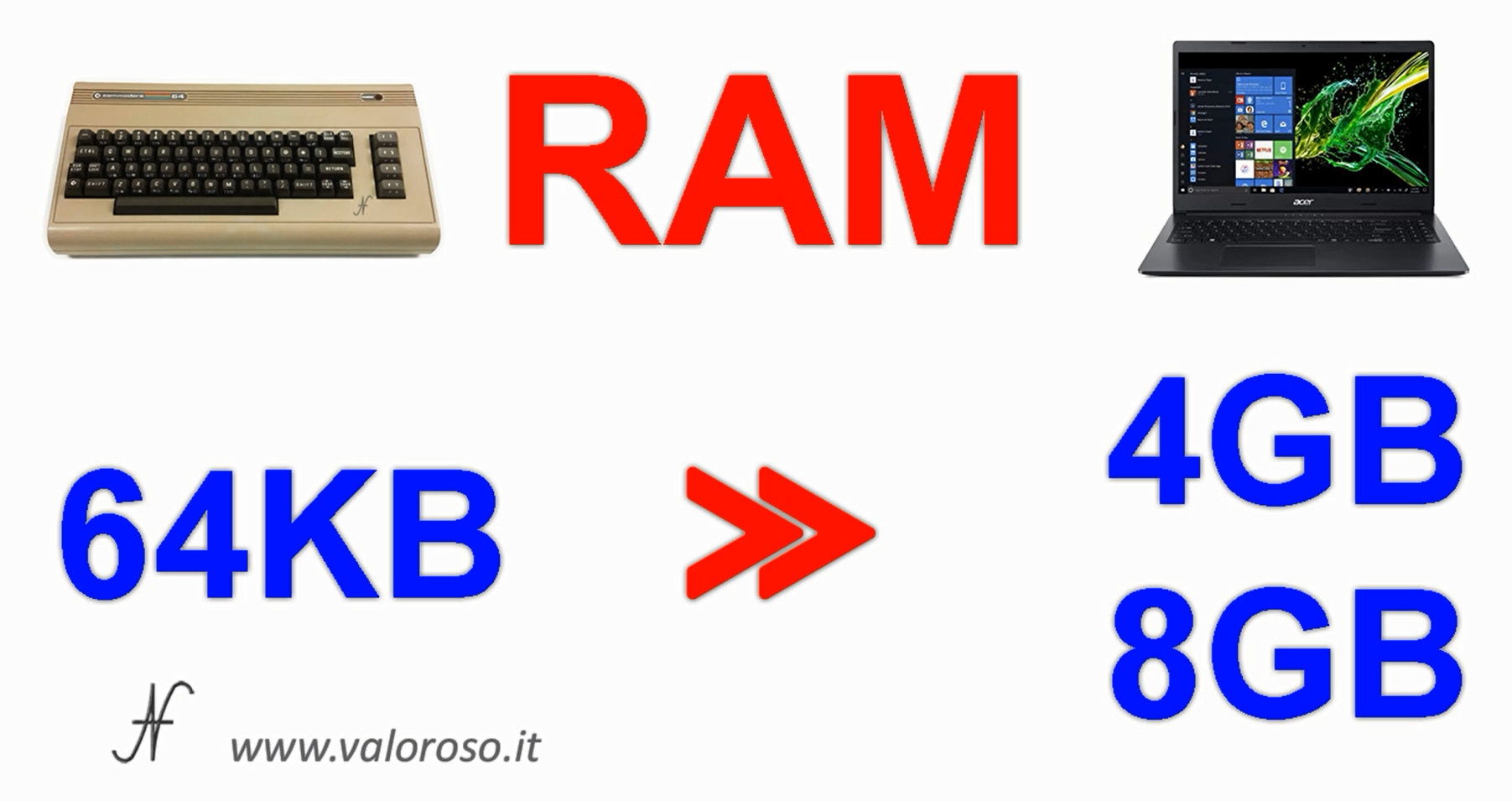
In this case, we can therefore say that the capacity of a normal modern PC is about 100.000 times greater than that of the Commodore 64, but in the case of more performing workstations, it can easily reach 1.000.000 times that of the Commodore.
Intel i5 and i7 VS MOS 6510 processors
Commodore 64 CPU Vs Modern PC? It is difficult to compare such different processors:
- An Intel i5 with 4 CPUs and a frequency of 3 GHz;
- An Intel i7 with 8 CPUs and a frequency of up to 4.6 GHz;
- A MOS 6510 with a frequency of 1 MHz.
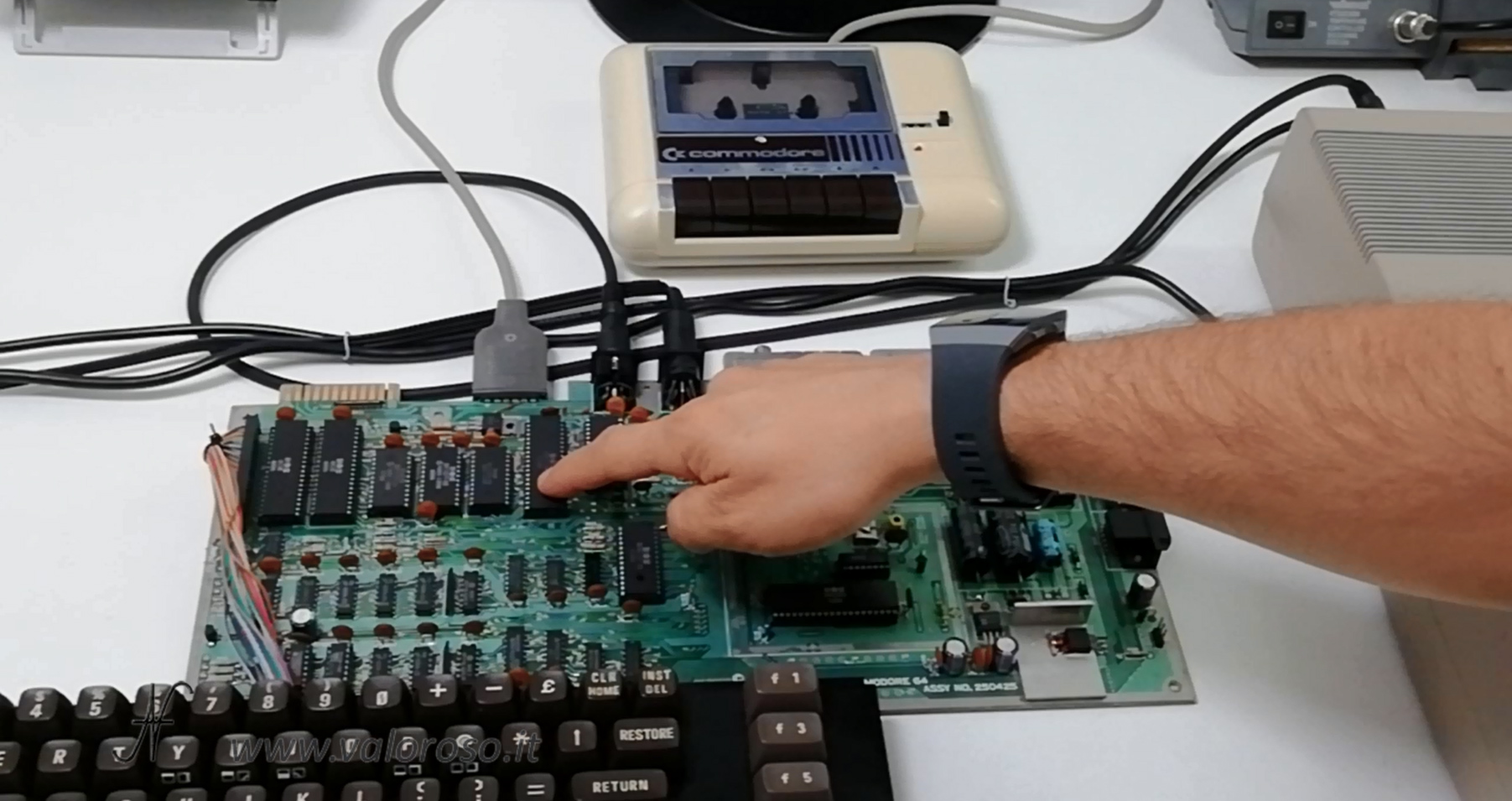
To compare the CPU, I wrote a small program in Basic. The program is identical, both for the Commodore 64 and for modern PCs. I used the same programming language to play on the same playground ...
The program repeatedly carries out a cycle, in which there are some mathematical operations. I have calibrated the number of cycles so that they are done in 10 seconds.

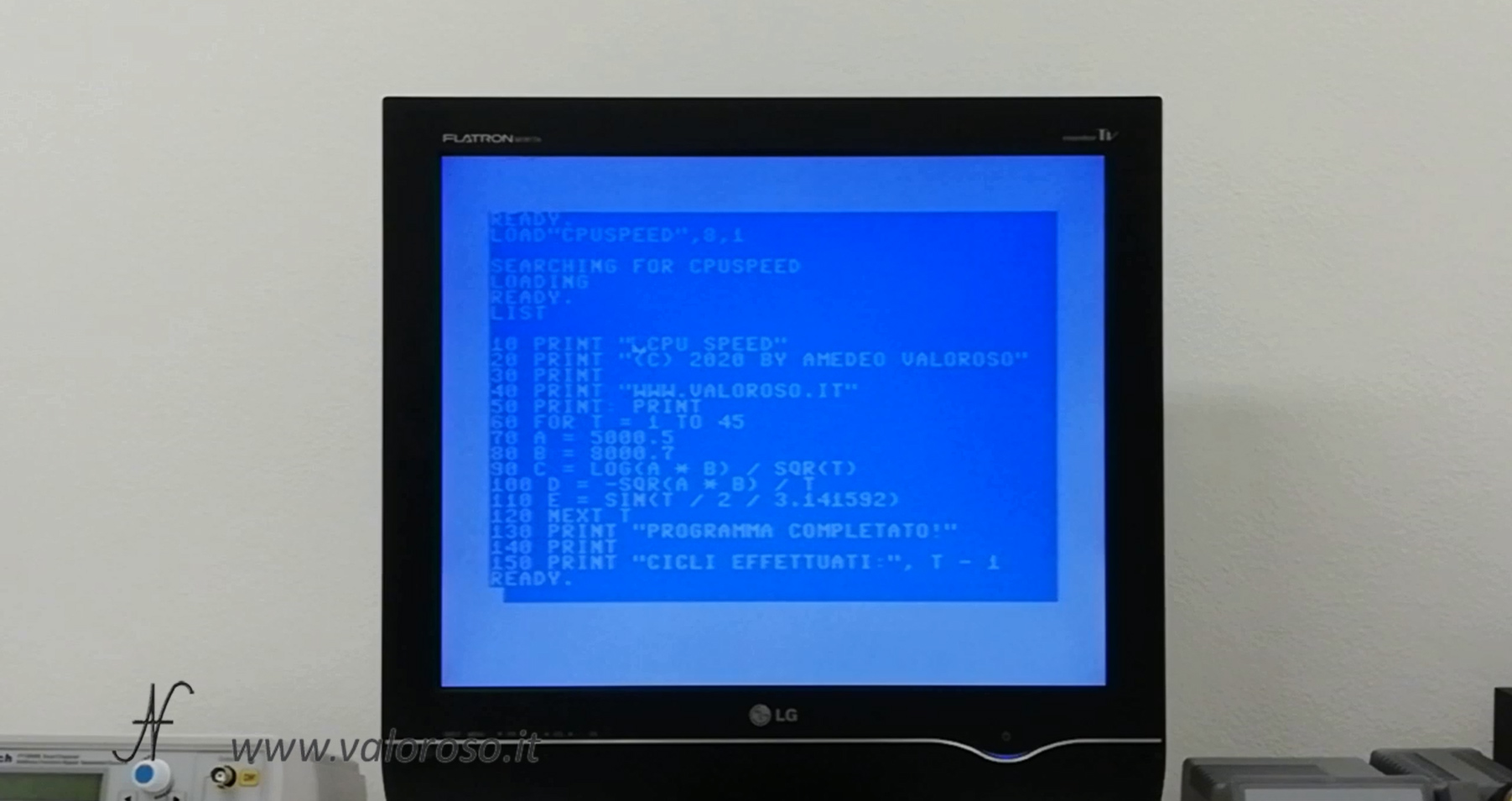
The Commodore 64 can perform 45 cycles, while the two modern PCs perform approximately 7,000,000 cycles in 10 seconds. It is true that the CPU of modern PCs was not 100% busy while running the test program, but we can still say that the CPU of a modern PC is at least 150.000 times more powerful than that of the C64.
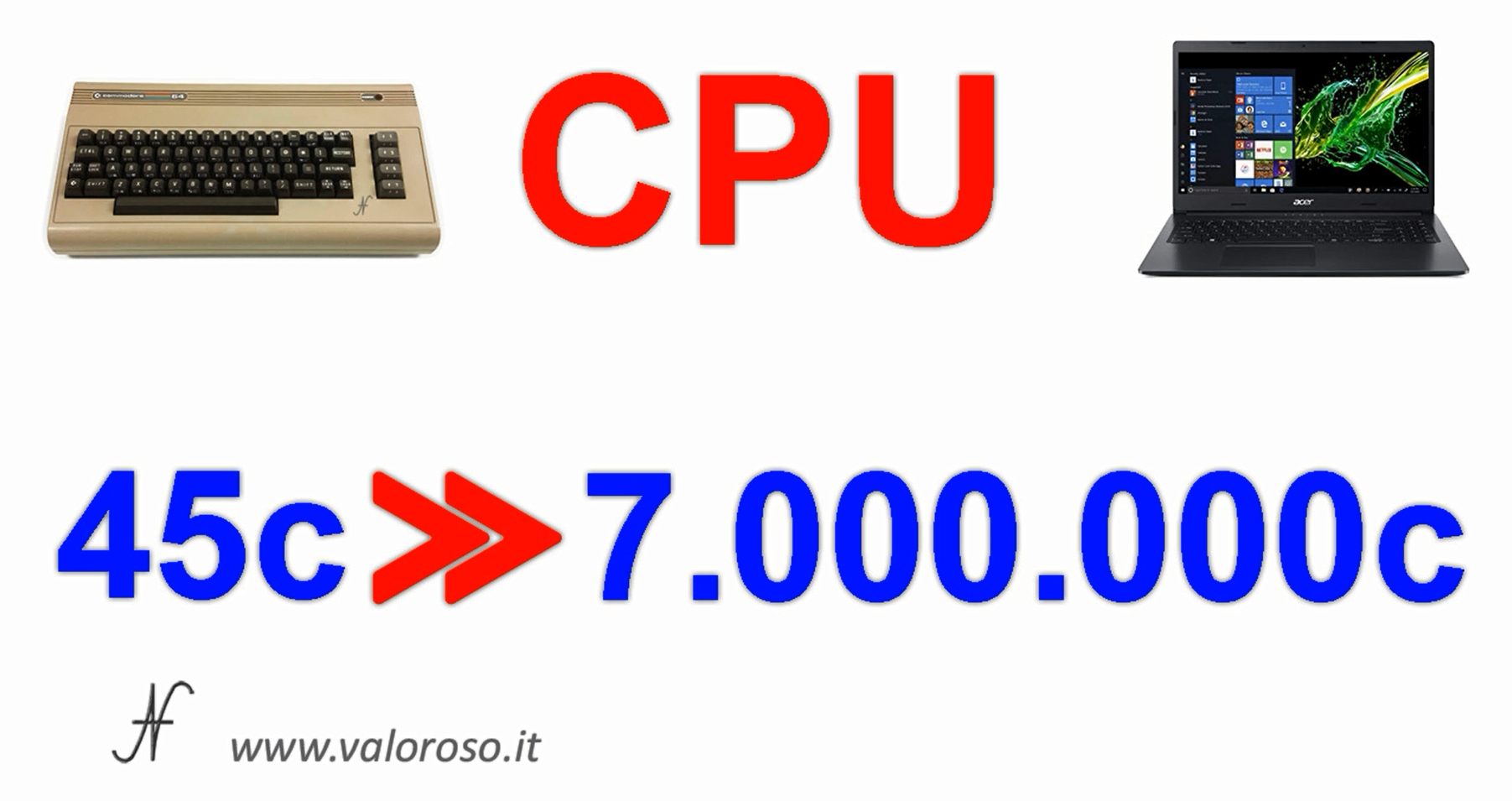
What about removable media?
The Commodore 64 Vs Modern PC match continues, with the comparison of removable media. At the time of the Commodore 64, the media that were used were:
- the cassettes;
- i floppy disk.
Now we use the USB flash drives.
Commodore 64 cassettes hold approximately 150 KByte per side for 45 minutes in standard mode. We can therefore consider 300 KByte for both sides of a box.

Floppy disks contain approximately 170 KBytes per side, which is approximately 340 KBytes in total.
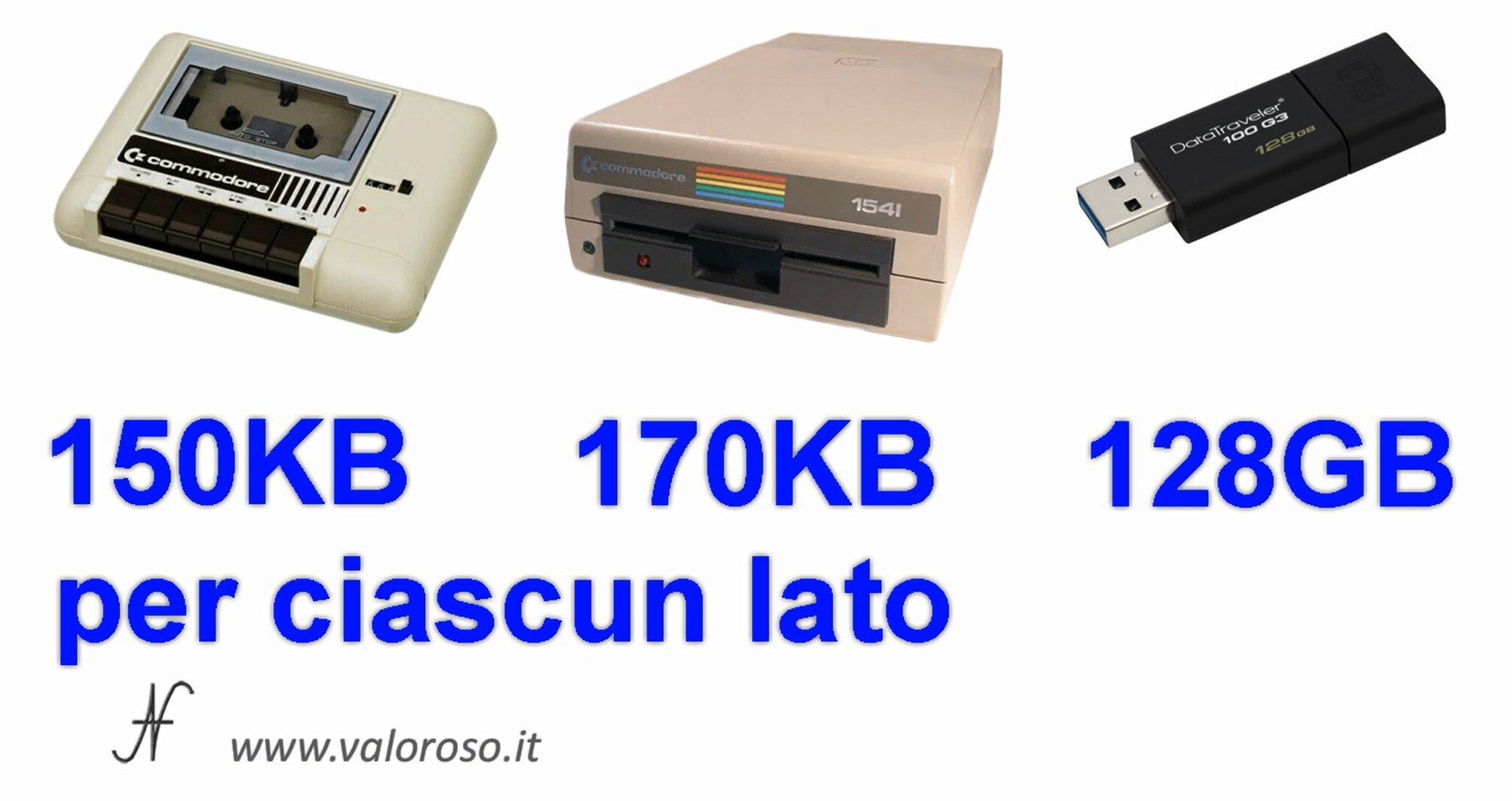
A modern USB3 pendrive also holds 128 GByte and more of data: beyond that 400.000 times more than Commodore's removable media!
Analyzing the data transfer speed:
- the 1531 datassette loads data at approximately 50-60 bytes per second;
- the floppy disk drive 1541 reaches 300 bytes per second in normal mode; the same drive, in fastload mode, also reaches 5 KBytes per second;
- a modern USB3 pendrive can transfer data at about 200 MBytes per second.
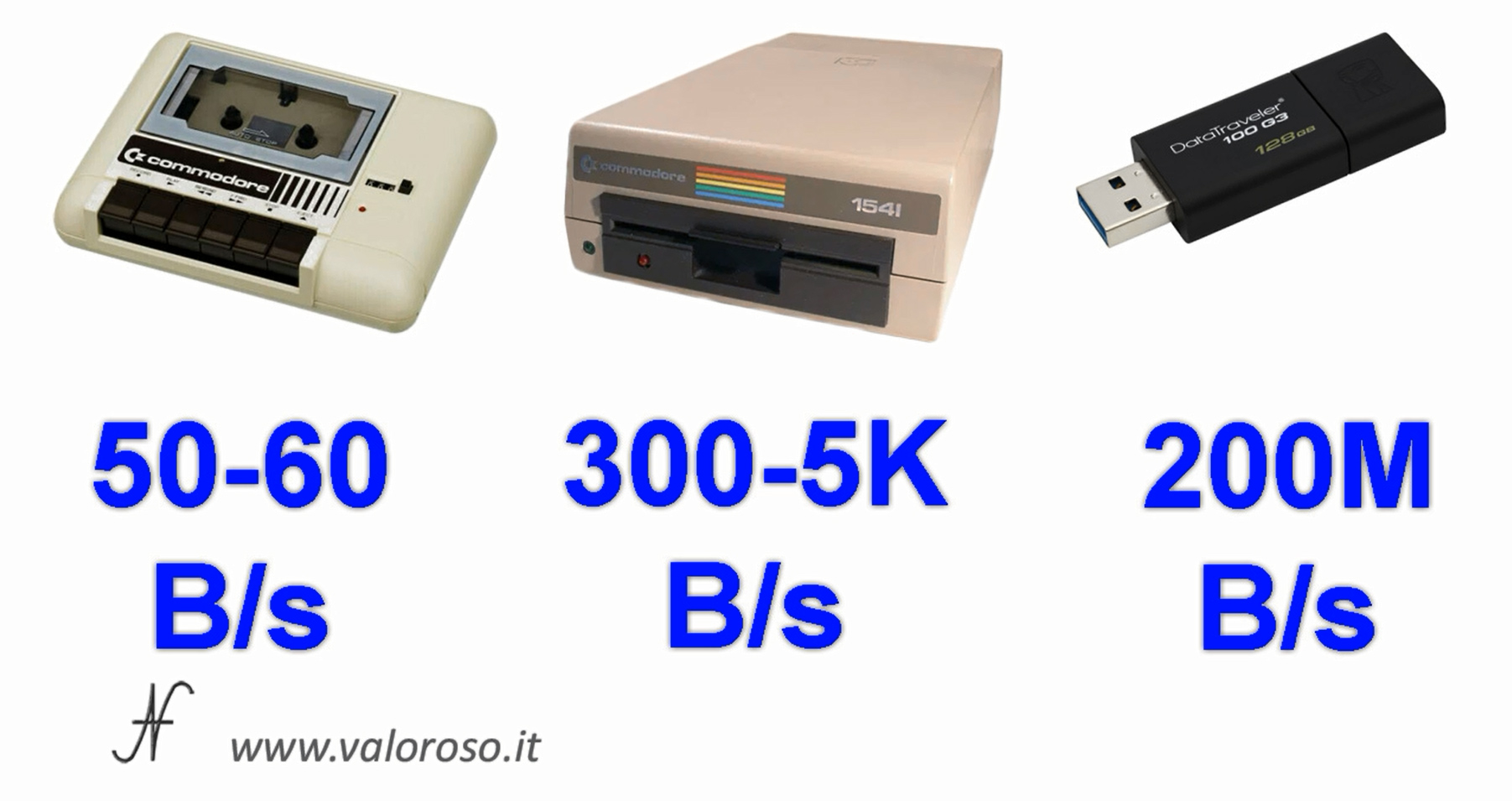
Even on data transfer, the difference is noticeable: a modern pendrive can transfer data 4.000.000 times faster than a datassette e 650.000 times faster than a standard mode floppy disk drive.
Modern Hard Disk VS Commodore Hard Disk
The Commodore 64 did not have a hard drive, but there were hard drives that could be connected to the computer. The capacities available in the early 1980s were around 5-10 MBytes.
For example, the CBM D9090 hard disk has a capacity of 9.6 MByte, and can be connected to both the Commodore 64 and the Commodore Vic-20 by means of an adapter.
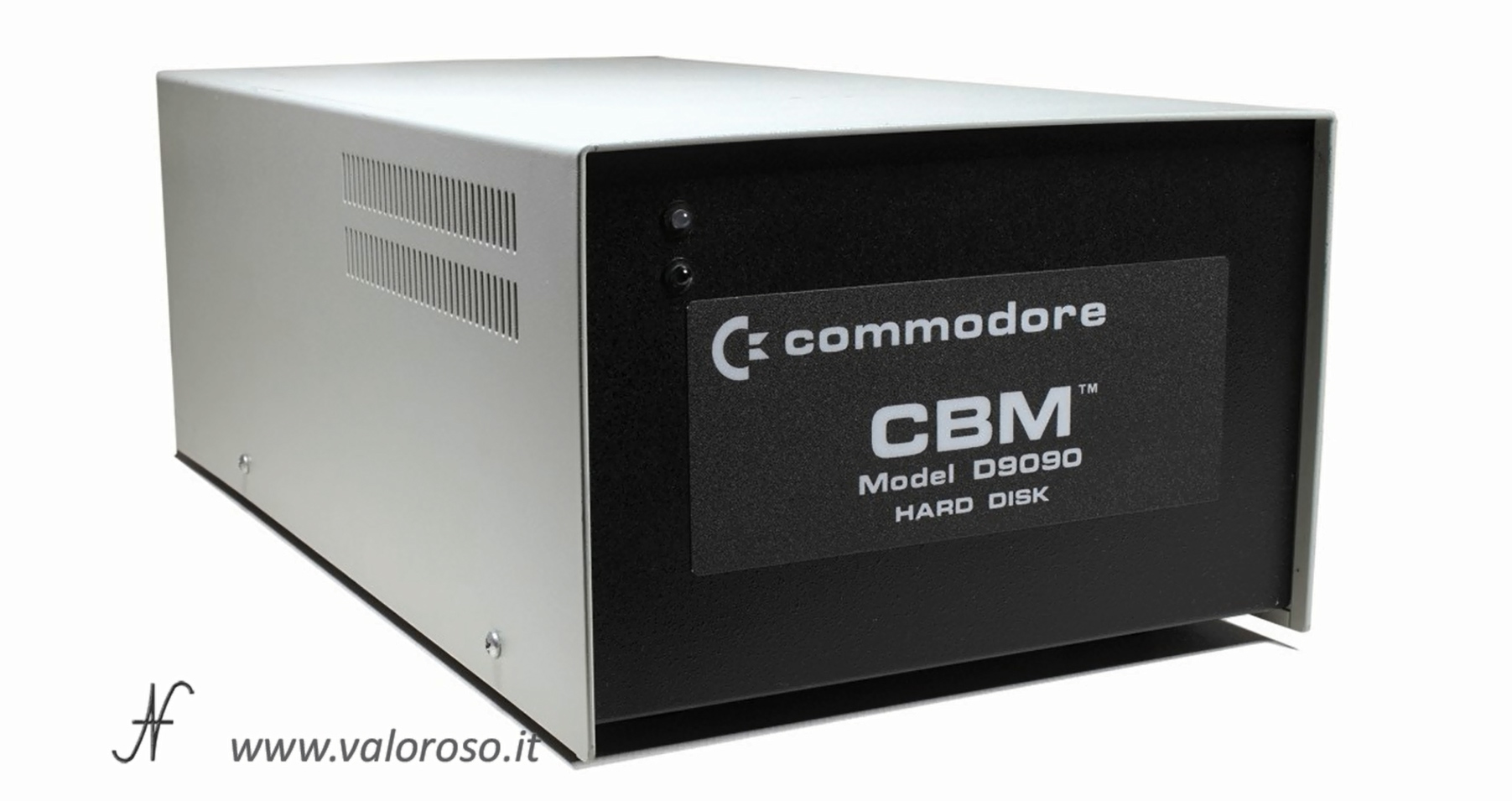
Currently there are hard drives with a capacity of up to 12 TByte, but, on the PCs present here, those that are competing against the Commodore, we have the following hard drives:
- Fixed PC: SSD 256 GByte + HDD 1 TByte;
- Laptop PC: 256 GByte SSD.
These PCs have hard drives of even capacity 130.000 times that of the Commodore. In more performing PCs the capabilities can also be 1.000.000 times higher than that of the Commodore.
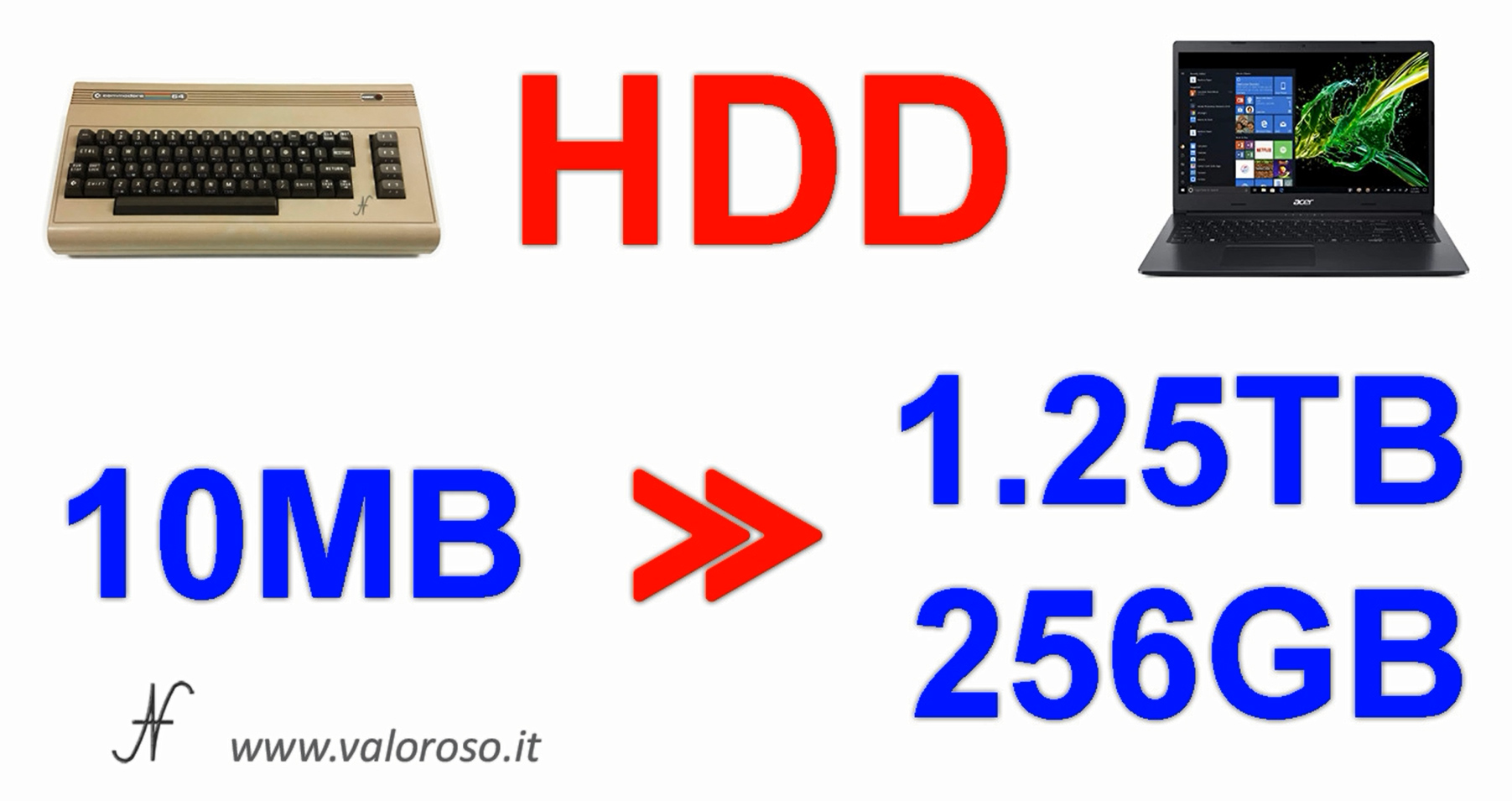
The data transfer performance is quite different: the fixed PC can read data at over 500MBytes per second on the SSD and 200MBytes per second on the hard disk. Instead, the laptop is a bit slower: it reads data from the SSD at only 30MBytes per second.
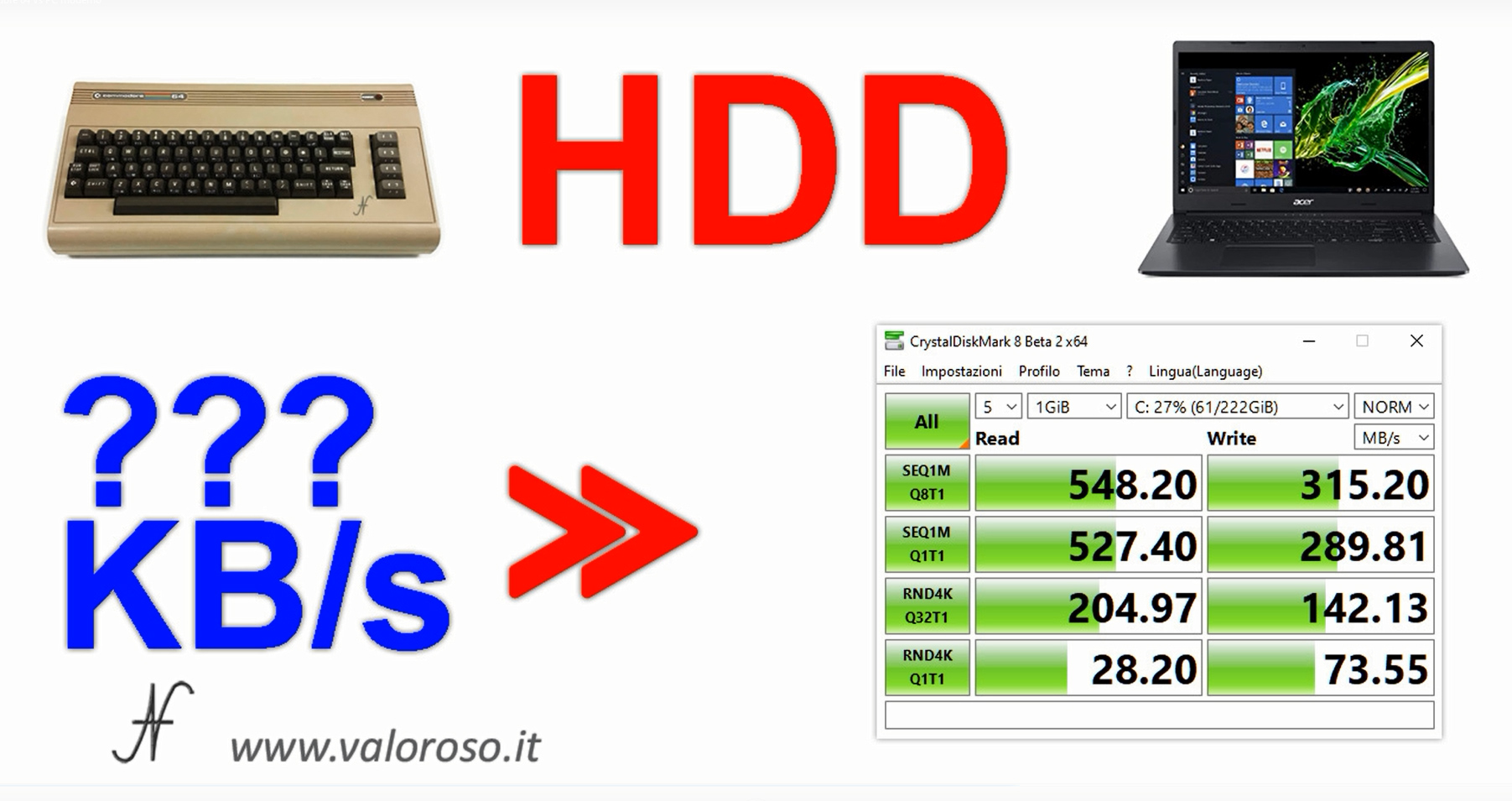
But these numbers are very high, when compared to the data transfer speed of the Commodore's hard disk, which is only 1200 KBytes per second!
In short: a modern hard disk can also read data 400.000 times faster than the Commodore.
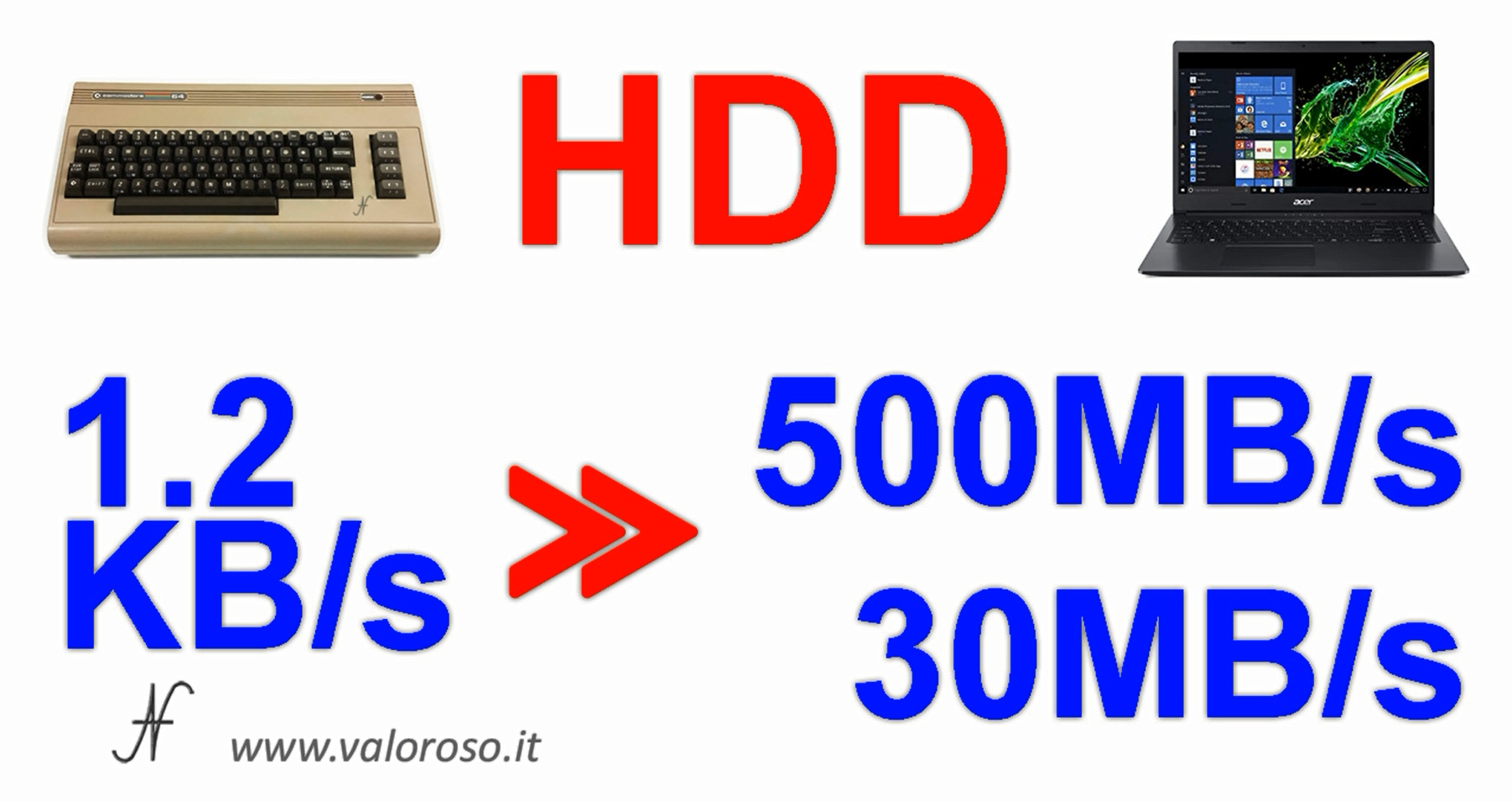
Modern Modem VS Commodore Modem
The data rates of modems are greatly affected by the quality of the telephone or data line. Furthermore it must be considered that it is not possible to directly compare the baud with the bits per second. For simplicity, and since the differences are also abysmal here, I will allow myself this lightness.
Modern connectivity offers easily reach 100 Mbit per second, but also 1 Gbit per second in metropolitan centers. The modems of the early 1980s reached 300 baud, while a few years later those at 1200 baud also came out, like the one shown in the photo: the Commodore 1670.
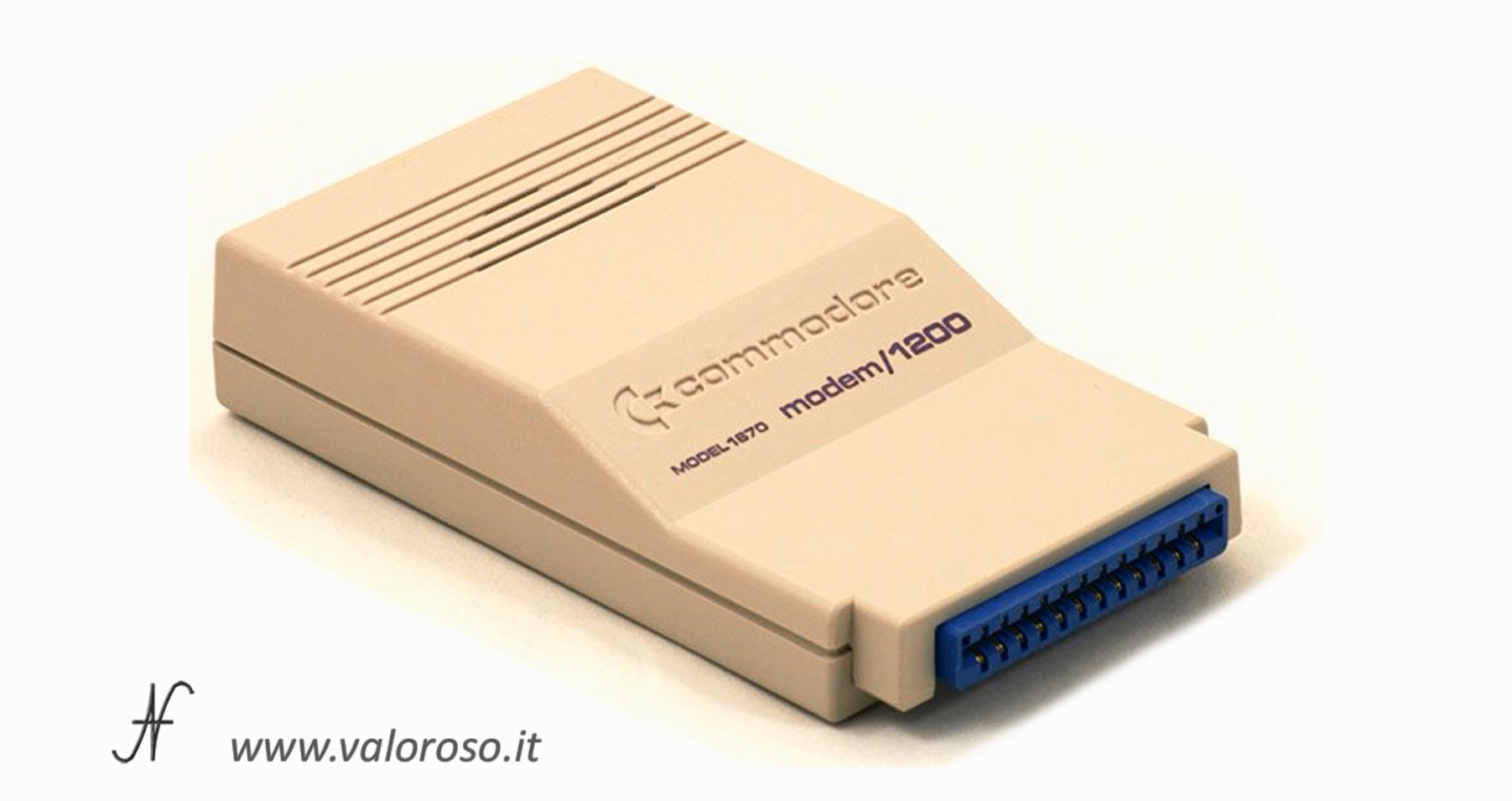
Well ... today we are able to transmit data at a speed of 300.000 – 800.000 times faster than the data transfer speed available in the 1980s.
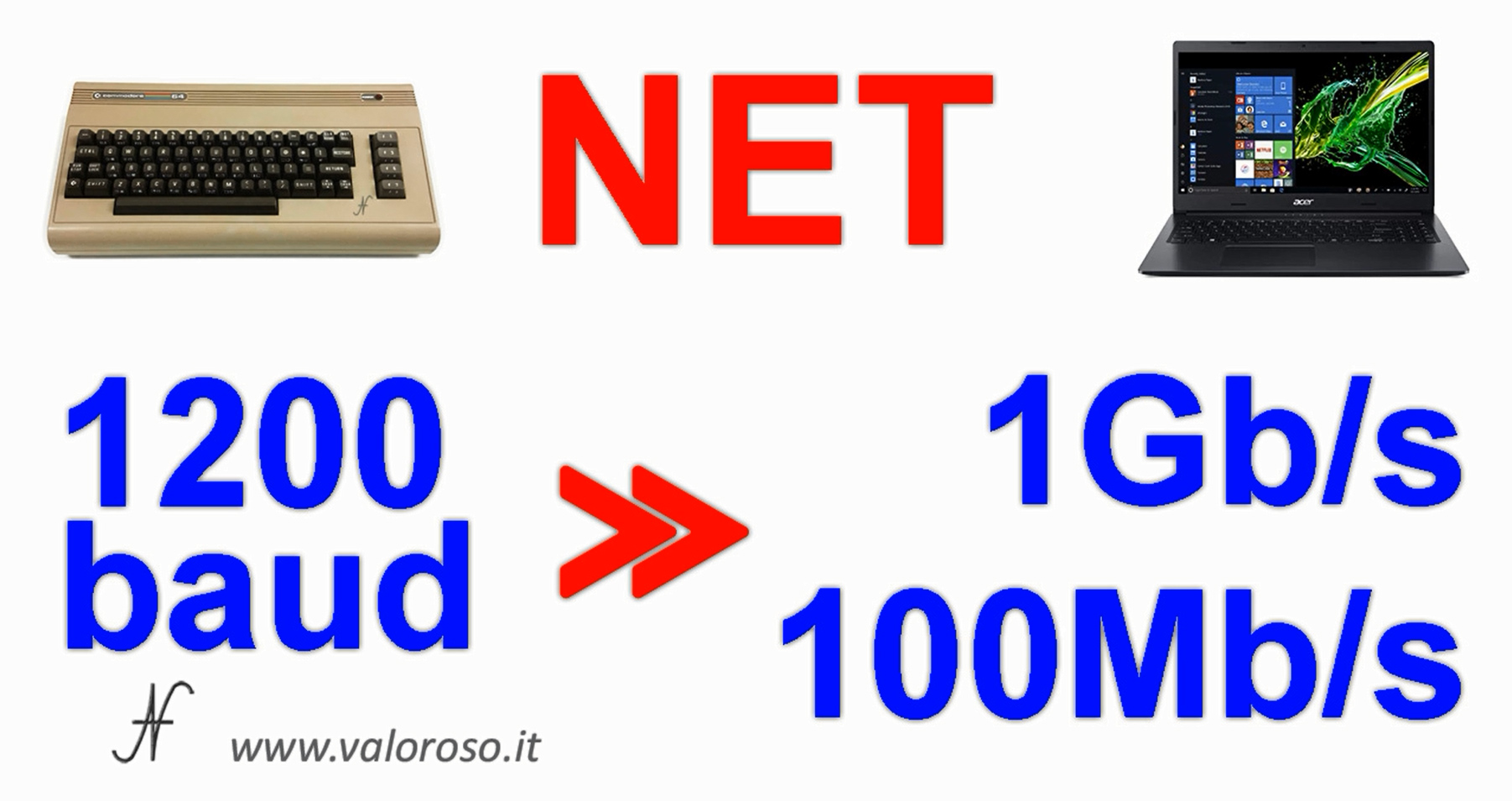
Modern video card VS MOS Technology VIC-II
Finally, let's compare some modern video cards, the ones I have in the PCs that are competing, with the VIC-II, the Commodore 64 video chip.
Both modern PCs each support two 16 million color HD (1920 × 1080 pixels) monitors, the Acer laptop's video card has 2GByte dedicated memory.

The Commodore 64 video chip, the MOS VIC-II, supports a 320 × 200 pixel, 16-color monitor and is capable of using 16KByte of memory, including ROM and RAM.
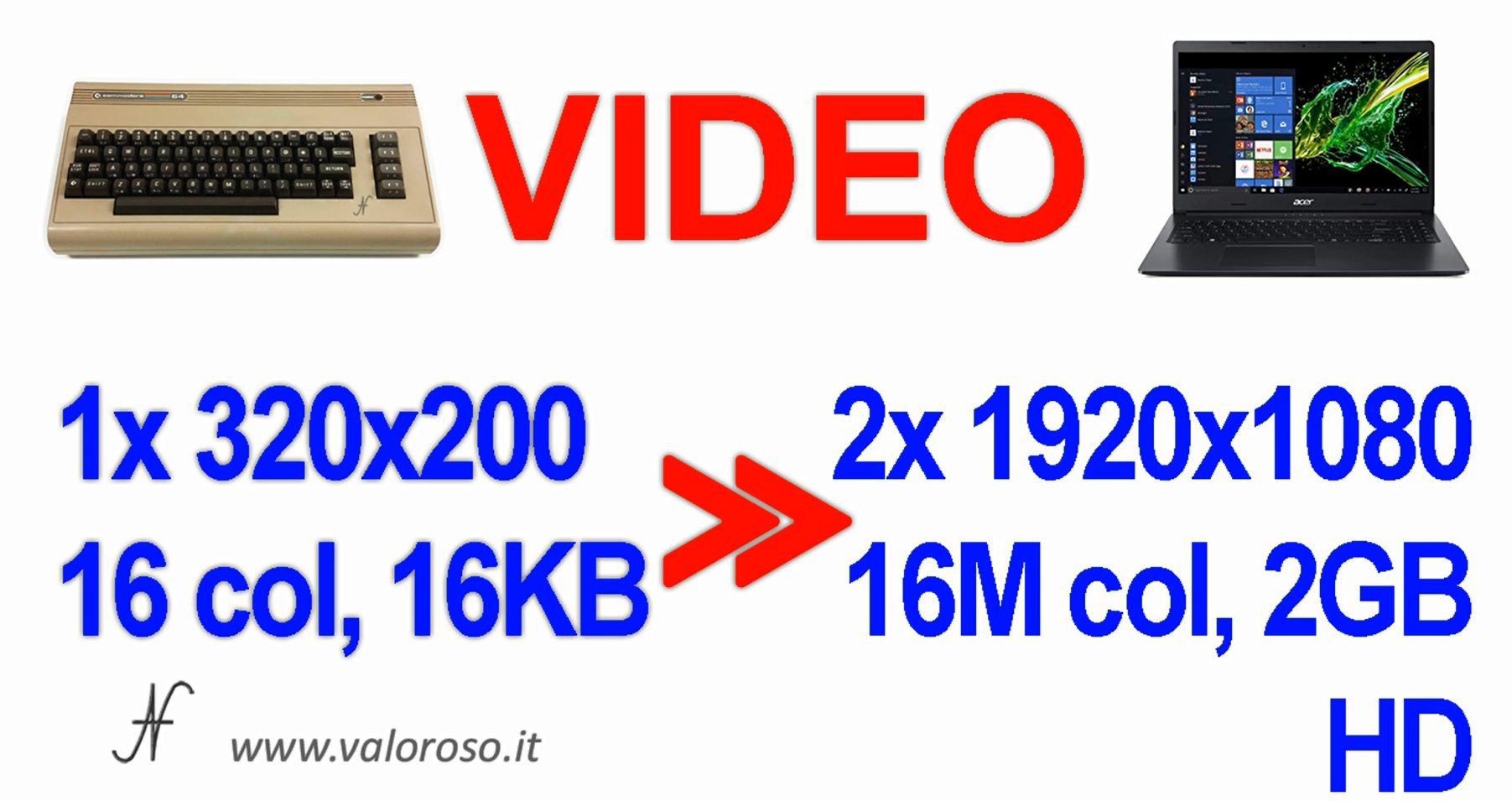
The composite video signal, used by the Commodore 64 to send images to the TV, has a band of less than 6MHz, while modern HDMI protocols provide for a 340MHz band. Through such a band, with modern modulation systems, tens of Gigabits per second can flow.
Commodore 64 Vs Modern PC: Moore's Law
In conclusion, it is possible to say that a normal PC purchased in 2020 has characteristics that are from 100.000 ad 1.000.000 times higher than those of the Commodore 64.
With these experiments we must also revise Moore's law.
Moore's law is named after Gordon Moore, co founder of Fairchild Semiconductor and Intel.

Moore theorized that computer performance would double every 18 months.
Well, about 38 years have passed since the Commodore 64 era, so we should have expected performance improvements of about 33,000,000 times.
In fact, it appears that computer performance doubled every 24 months, therefore in a slightly slower way than Moore theorized.
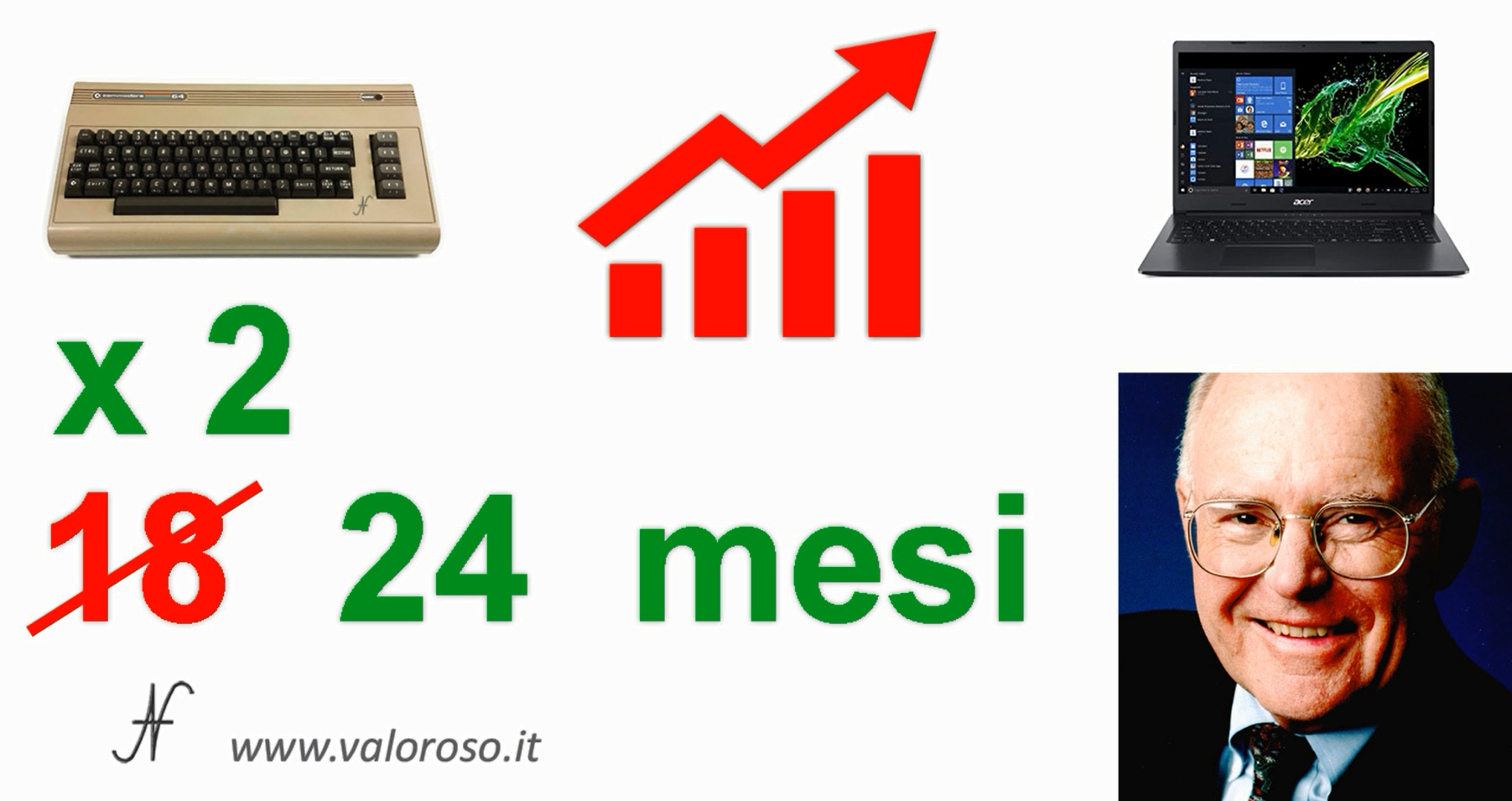
I can’t seem to find a video of C64 HDD in action. I find it astonishing that it cost an arm and a leg at the day and it had a transfer of only 1.2KB/s, which means you had to wait around 30-40 second to load a ~40KB game from a HDD. Must have been unacceptable even back then.
Yes it’s not very fast. However, without fastload, the same game would need more than 2 minutes with floppy and 10 minutes with tape!
At those times, programming was much more fun because a single person could complete real projects. Now it is impossible to do anything without a large team.
Yes, great times!